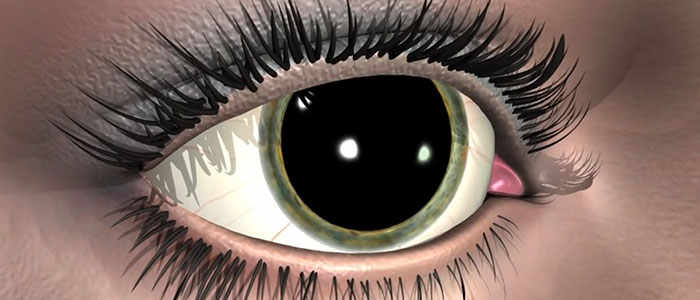
Have you ever tried to look into a room by looking into the keyhole? You only see part of the room... right? Well, that is what it would be like for your eye doctor to look into your eye through an undilated pupil. They would only see a partial view of your retina, with the possibility of missing vital information about the health of your eyes.
That is why it is important to have your eyes dilated for your exam, whether through traditional eyedrops which will wear off in several hours, or through new technology that can take a panoramic digital picture of the inside of your eye without dilation. Either method will provide your eye care professional valuable insight into your ocular and systemic health. Here are the top 5 reasons to have your full retina evaluated through a dilated view:
- To have the health of your retina evaluated. The retina is like the film of the camera of your eye that processes the vision accurately. The central retina contains cones for your color and detail vision, and the peripheral outer retina contains rods for your night vision.
- To detect ocular and systemic diseases early. Ophthalmic diseases such as glaucoma, and macular degeneration need to be caught early and treated for optimum vision. Furthermore, the saying “the eyes are the window to the soul”, is true. Systemic diseases such as diabetes, hypertension, and high cholesterol can be detected sometimes before they show up in the rest of your body. Your eye care practitioner can coordinate care with your family physician to ensure optimal health.
- Dilation can help your doctor get an accurate glasses prescription, especially for children. In the pediatric population the eye muscle can contract extensively more than adults, so their muscles work harder, thus fatiguing the visual system. Dilated exams can ensure a more accurate glasses prescription.
- To give you peace of mind, and also provide a baseline for your eye doctor for future examinations. If you move or relocate with a new doctor, have your records transferred for maximum eye health benefits.
- Lastly.......A dilated exam could save your life! Numerous reports show that cancers such as lung, or breast cancer metasticize to the eye and can be detected in the retina during an eye exam. In children up to age 15, there is a 3% chance of an aggressive cancer in the eye called Retinoblastoma. Symptoms of this in a child’s eye are a “White Pupil “ reflex in a photo. When detected, this cancer can be caught early by dilating the eye.
Overall, the benefits far outweigh the risks in a dilation of the eyes. The side effects are blurry vision, and sensitivity to light for several hours following the exam (so bring a driver with you). The benefits, however, could be larger than life!
The content of this blog cannot be reproduced or duplicated without the express written consent of Eye IQ.
 Do you have floaters in your vision?Floaters are caused by thick areas in the gel-like fluid that fills the back cavity of your eye, called the vitreou...
Do you have floaters in your vision?Floaters are caused by thick areas in the gel-like fluid that fills the back cavity of your eye, called the vitreou...


